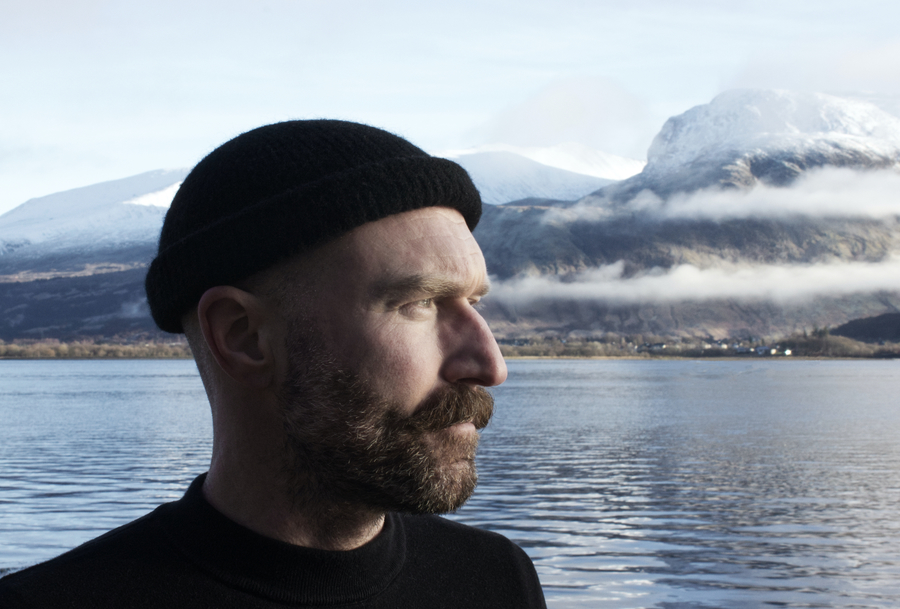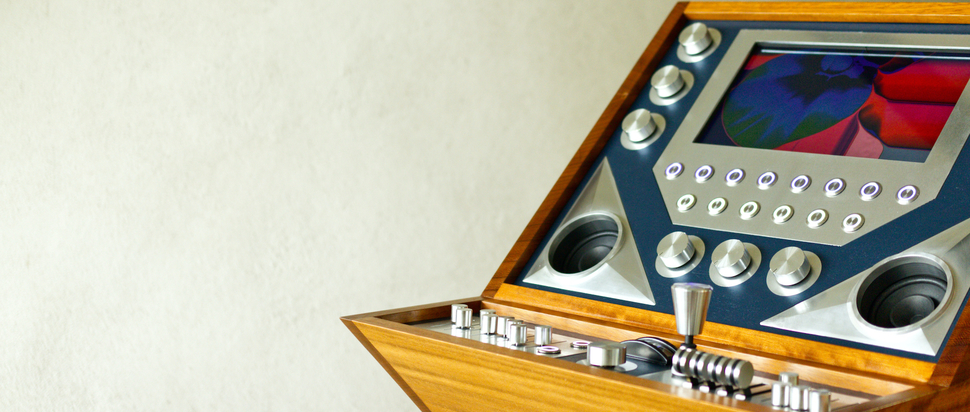MŮO: turning cosmic rays into music with Lomond Campbell
Ahead of bringing his purpose-built muonophone to the Fringe for MŮO, we catch up with Lomond Campbell to talk physics and turning cosmic rays into music
“I’m probably about the busiest I’ve ever been in my fucking life, even including all the FOUND madness… And I could really do with it not being busy right now so that I can try and focus on this one fucking show."
We catch up with musician, producer and visual artist Lomond Campbell in mid-July, fresh from playing some live shows with Kathryn Joseph, whose last two albums he produced. He’s got a looming deadline for sound design work for a BBC podcast, and he’s just two weeks out from presenting MŮO at the Fringe, where he’ll be turning the signals generated by muon particles into music for a part live show, part sound installation run at The French Institute. "It’s like a sick prank; everything has been delayed and it’s all bottlenecked and funnelled into this one month – this month.”
Mild panic aside, Campbell admits that he enjoys being busy. He's just feeling a tad overwhelmed by how much work is needed to deliver MŮO, a work rooted in some quite seriously complicated physics. But MŮO is in good hands; it’s not the first time Campbell has worked on a musical project with a scientific bent. In 2009, alongside Simon Kirby and FOUND bandmate Tommy Perman, he helped build Cybraphon, an interactive autonomous robot band, while more recently he created LŪP, a beautifully intricate tape looping machine of which he made an album of the same name.
It’s no surprise, then, to learn how MŮO came to be. “The University of Glasgow got in touch with me out of the blue and said, ‘look, I don't suppose you'd want to build one of your music machines using our muon detectors?’”
In an attempt to wrap our heads around MŮO, firstly, what are muons? “Cosmic rays generated by huge nuclear events in deep space,” responds Campbell. “Most of the cosmic rays that are hitting the Earth are generated by the Sun. However, a percentage of them are coming from huge events that are unimaginable, like black holes tearing galaxies apart or worlds colliding. Anything that's going to generate a massive amount of nuclear energy, it'll get spewed out across space and then once it interacts with the Earth’s atmosphere, muons are generated; they only last two nanoseconds, so their existence is brief.”
For the MŮO installation and live performances, Campbell has purpose-built a muonophone. A striking retro-futurist musical instrument, it features muon detection technology, with parts built by the University of Glasgow based on designs and specifications supplied by Campbell. While this technology can aid a technique known as muography that has allowed the discovery of hidden chambers in the Great Pyramid of Giza, Campbell is more interested in turning signals from these detectors into music.
For the two different sides to MŮO, of the free-entry installation element he says, it'll just be “the machine doing a sort of long-form and self-generated piece that you can walk in and kind of experience as a quadrophonic setup – that'll be more contemplative and more ambient. But the [live] performance, it certainly starts very ambient, but then I've got a kraut-y track with arpeggios generated by the muons; I've got a really sort of dark folky kind of sound, and then later it goes quite hard – there's a quite heavy techno tune."
He continues: "I think what I've done is very musical. There's passages where you will just hear these random notes being generated, and the machine animates every time a muon’s detected – it's got a really mechanical clicky sound to it, so it should be really apparent throughout the whole show, but there's definitely bits where it's music.”

With the muons always being detected in real time for both facets of MŮO, in a live setting their triggers will be controlled and manipulated to some extent by Campbell through processes like filtering, quantizing and looping, and given their moments within his compositional pieces. "I feel like this project should be a duet between the muons and me," he says. "I don’t want it to be 50 minutes of randomly generated notes, even if they are in key, I want it to be a composition, I want to put something into it as well, so I've written music around it."
A muon-reactive visual element will also feature in the live shows – “every time a muon strikes, it’ll generate a new visual or it’ll create a new shape” – and on 3 and 5 August, the muons will collaborate not only with Campbell, but also with Kathryn Joseph and King Creosote respectively, Joseph making use of the French Institute’s in-house grand piano, and Kenny Anderson bringing his synths along for the cosmic happening.
While Campbell is quick to give kudos to Made In Scotland for supporting works like this, he's scratching his head over where MŮO sits within the usual Fringe oeuvre. “It’s not very theatre, it’s probably quite on the fringe – no pun intended,” he quips. “It feels like it might be a bit of an awkward unusual weirdo cousin that doesn’t quite fit into the family,” he muses, admitting nanoseconds later, “I like that!” Us too.
MŮO, the immersive installation runs at the French Institute, Edinburgh, 8-25 Aug (not 11), from 11am (free, non-ticketed)
MŮO Live takes place at the French Institute, Edinburgh, 1, 3-7, 14, 19 and 23 Aug, 6-7pm – tickets via edfringe.com
lomondcampbell.com
madeinscotlandshowcase.com
